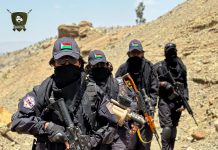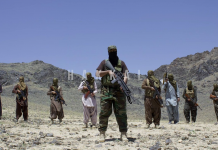Abid Bashir
Srinagar (NVI): For Shabnum (55), a resident of Nambla village of Uri in north Kashmir’s Baramulla district, frequent ceasefire violations are no less than a nightmare. Every exchange of mortar shells between the two sides brings back haunting memories of 1990 when she lost her husband.
Like Shabnam, there are dozens of families, who lost their dear ones over the past 20 years in the heavy mortar shelling by Pakistan. Many have lost their limbs too. Thirty years on, the residents of Uri in Baramulla district, Keran and Tangdhar in Kupwara district recall the gory memories of the 1990s when the armies of India and Pakistan were at loggerheads, as militancy intensified in Kashmir.

From 1990 to 2003, there has been a heavy exchange of fire between the two sides which has not only taken a toll on the soldiers on both sides of the fence but also on the local population that lives in villages close to the LoC in northern districts of Kashmir—Baramulla, Kupwara and Bandipora.
Indian and Pakistan framed a 2003 ceasefire pact that by-and-large remained intact for almost two decades even though the agreement was violated intermittently on certain occasions. Following the ceasefire pact, a result large numbers of houses, government schools, colleges and other buildings were built in the shelling prone areas along the LoC in Uri, Tanghdar, Keran and Gurez areas of north Kashmir.
But after almost a gap of 17 years, the border residents are in a tight grip of fear as the threat of losing lives and property is looming large on their heads yet again, forcing them to demand the construction of community bunkers, the process of which was left mid-way after a few were constructed in early 90’s in the wake of war-like situation.
“Since August 5 last year, the two sides have started exchanging fire. But the situation started turning ugly from January this year. And since March, we started feeling the heart of LoC shelling. Whenever Pakistan army resorts to Ceasefire violation, the Indian army gives a strong reply and that’s when shelling turns intense,” says Shabnam, the mother of four children- three daughters and a son.
She said Uri’s Rampur sector, which has many villages adjacent that include Nambla, Churunda, Kamal Kote, Dulanja and others are vulnerable. “Last week, shells rained near my house. I thought it is the end. My small house developed cracks,” she said.
“In the early 1990s, the then Government at the Centre and J&K state announced mass construction of community bunkers. A few were constructed but the process was left mid-way. Had there been community bunkers in every village, we would have felt safe, but every time there is shelling, we remain ready for the death,” she added.
In Keran village of Kupwara district, people narrate similar ordeal. According to the village locals, many people have already built small bunkers in their homes as the area remained tense since 2019.
Things turned worse when there was close combat between five militants and five soldiers from the Army’s Special Forces squad in the first week of April this year. All ten lost their lives. Barely a few days after the incident, the Pakistani army resorted to heavy artillery shelling that was given a befitting reply. Three civilians, including an eight-year-old boy, lost their lives as shells rained on residential areas including Keran and Chowkibal area of the district.
“The situation is worse in the villages close to LoC that include Keran and Tanghdar sectors. Everyone is under the tight grip of fear. Shelling turn so violent at times, we believe it’s a war,” said Abdul Hameed, a resident of Keran sector of Kupwara. “It’s high time for the government to chip in and help poor people construct bunkers so that they can hide there when there is intense shelling.”
Many residents said that whenever the relationship between India and Pakistan sours, the only response from the J&K administration is “they ask us to vacate the villages.” “In the past two years, we left our village at least 15 times. Last time we vacated our village post rollback of article 370,” said Abdul Suliman, another border resident of Tandghar. “All of us went to our relatives’ houses. Some of us stayed in army camps. How does the government expect us to survive during the times of war?”
Talking to NVI, Director General of Police (J&K) Dilbagh Singh linked the frequent ceasefire violations with the infiltration bids. “It’s true that of late there is an increase in the CFVs along the LoC. This is aimed to give cover to the militants who want to sneak in. Our border and hinterland grid is alert to foil all the bids,” he said. Inspector General of Police, Kashmir Vijay Kumar said that this year, some infiltration bids were successful and that’s why despite killing 108 militants, number of active militants is between 100 and 200.
General officer Commanding (GoC) of Srinagar based Army’s 15 Corps (Chinar Corps), Lieutenant General BS Raju while addressing media recently said that a few community bunkers were constructed in the villages close to LoC, but there is a need to construct more and more such bunkers for the safety of the local civilian population.
-ARK








